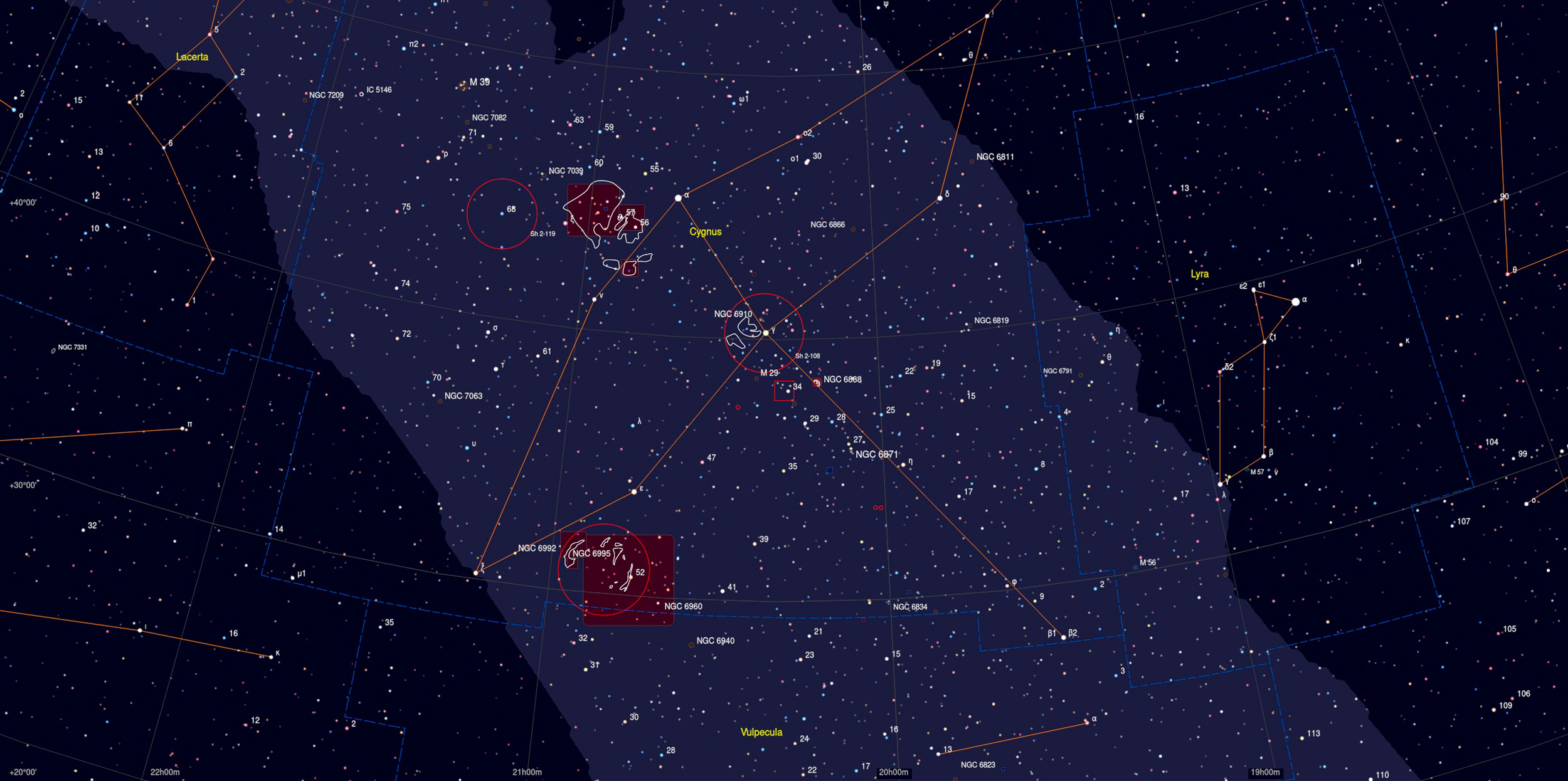P Cygni Nebula
P Cygni, the brightest star in this image, is luminous blue variable (LBV) supergiant, which had a nova outburst in 1600 and is the prototype of a well known class of stars. In 2006, a large shell of filamentary OIII nebulosity was discovered. This is the remains of an historic eruption thousands of years ago, an event that would have been similar to the Great Eruption of Eta Carinae in 1843 (which is also an LBV). Some parts of the OIII nebulosity also have a Ha counterpart so long Ha exposures as well as OIII have been taken. North is up in this image.
The paper describing the discovery of the nebulosity can be found here.
The planetary nebula in the upper left corner is Abell 69, shining at 18.7mag and an apparent diameter of about 25 arcsec.
[description from Sakib Rasool]
Details
